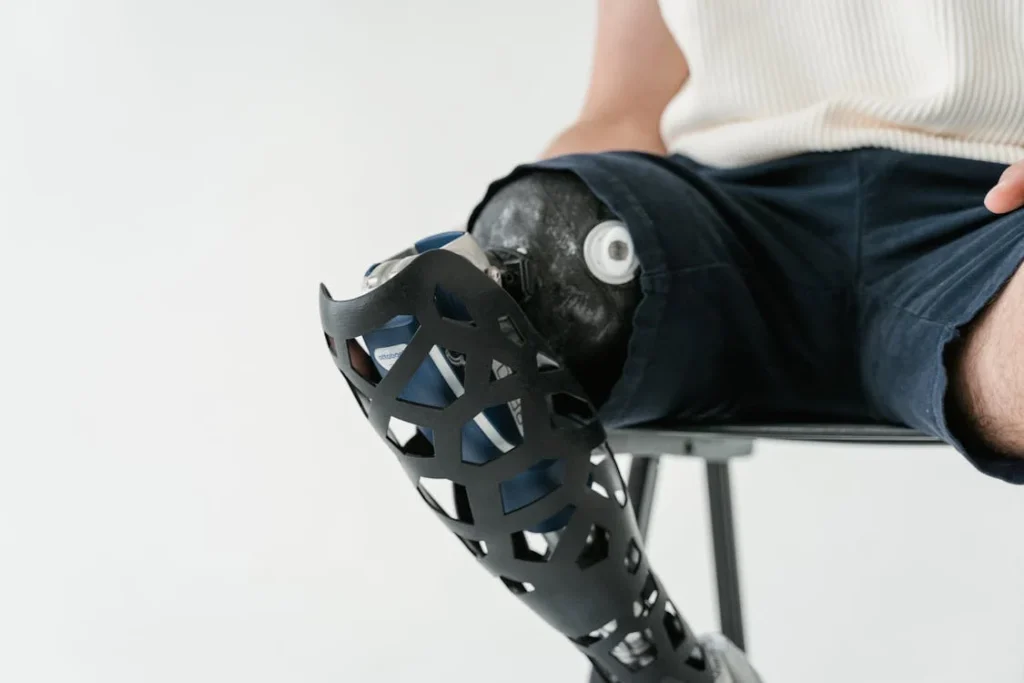When someone loses a limb, life changes — not just physically, but emotionally and mentally too. It’s a moment that brings fear, uncertainty, and a lot of questions. How will I walk again? Will I work? What about daily life?
At Robobionics, we’ve been walking beside patients and families across India for many years. And if there’s one thing we’ve learned, it’s this — timing matters. The moment when a person receives their first prosthetic limb can shape their entire recovery. The earlier the fitting happens — with proper guidance — the better the results.
We’ve seen it in real time. Patients who receive their prostheses early often recover faster, stay stronger, and feel more in control of their lives. Their bodies heal better. Their minds stay more positive. And they return to routines sooner than expected.
But these aren’t just clinical facts. These are real stories from real people. People who faced limb loss and turned their lives around by taking that first step — sometimes earlier than they thought possible.
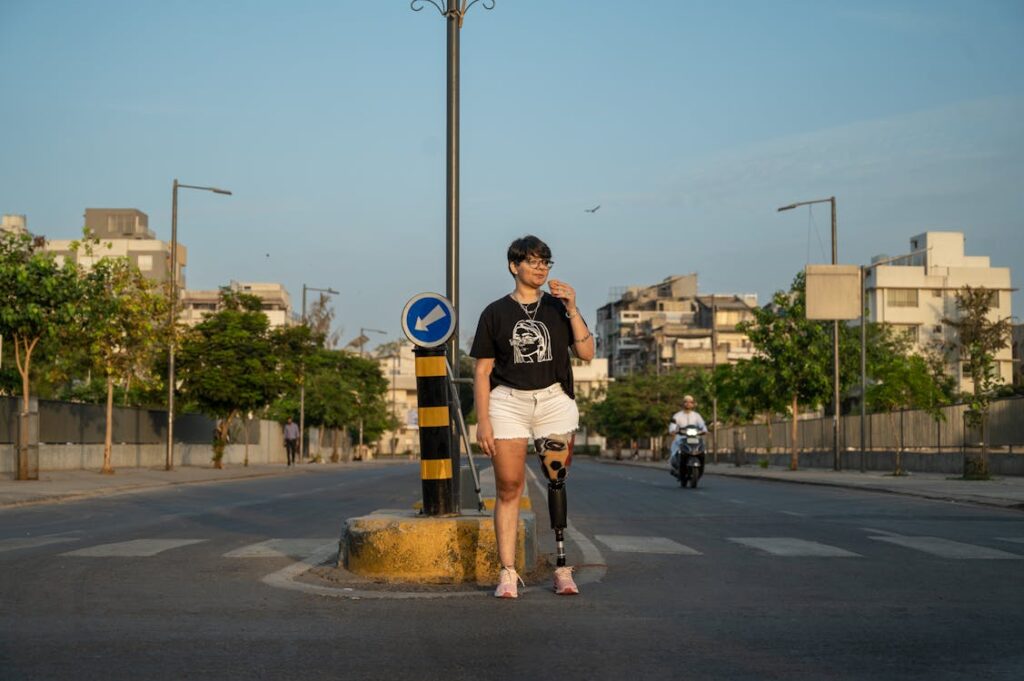
A New Beginning for Anjali: A Mother’s Journey Back on Her Feet
The Day Everything Changed
Anjali was 32 when her life took an unexpected turn. She was returning home on her scooter after picking up her five-year-old daughter from school in Pune. It was an ordinary weekday — hot sun, crowded streets, and the familiar rhythm of rush hour. But a reckless truck driver swerved at the wrong moment, and in seconds, everything changed.
The accident crushed Anjali’s left leg beyond repair. The doctors had to make a difficult call — a below-knee amputation. It was a shock, not just to her, but to her entire family. The woman who managed the home, dropped kids off at school, and worked part-time from home suddenly couldn’t walk. The emotional toll was as heavy as the physical one.
Anjali remembers those first few days vividly. “I didn’t cry at first,” she said. “But when I couldn’t stand to hug my daughter… that broke me.”
She was told she’d need rest, therapy, and eventually a prosthesis. But the idea of a prosthetic limb felt distant, even scary. She imagined something uncomfortable, heavy, unnatural. Her husband, Sandeep, was supportive but unsure. “We just wanted to make sure she healed first,” he said.
What they didn’t know at the time was that early prosthesis fitting could become their biggest advantage.
Meeting the Right Team
Two weeks into her hospital stay, Anjali’s surgeon introduced her to the rehabilitation team — including a physiotherapist and a prosthetist from Robobionics. They explained the process step-by-step: how her residual limb would heal, how they would begin shaping it, and when they’d aim for her first fitting.
Sandeep asked, “Isn’t this too soon? Shouldn’t we wait at least a few months?”
The answer was simple and clear: “Healing and prosthetic planning must go hand in hand. The sooner we start preparing, the better her body responds.”
Anjali was skeptical. But as the team explained how early movement could keep her muscles active, reduce swelling, and prepare her for smoother walking, she started to see the bigger picture. They weren’t pushing her to walk immediately — they were helping her avoid complications like muscle atrophy, joint stiffness, and emotional withdrawal.
With gentle exercises, limb shaping therapy, and the emotional support of her family, Anjali began to build back her strength — slowly, but surely.
The First Step with a Temporary Limb
By the sixth week after surgery, Anjali was fitted with her first temporary prosthesis — a lightweight, modular design made for early use. It wasn’t fancy. It wasn’t high-tech. But it was stable, easy to adjust, and most importantly, it gave her a chance to stand again.
That moment — her first step — was both terrifying and powerful. With her physiotherapist by her side, Anjali rose to her feet and took two small steps on parallel bars.
Her daughter watched with wide eyes from across the room.
“I don’t think I’ve ever felt so alive,” Anjali said. “It wasn’t just about walking. It was about hope.”
That week, she began using the prosthesis for short periods every day — walking to the bathroom, practicing weight shifts, and doing balance exercises. Her strength returned faster than expected. Her residual limb remained healthy. And her mindset changed from doubt to determination.
Returning to Motherhood and Independence
By her third month post-surgery, Anjali was walking unassisted around the house. Her confidence soared. She resumed cooking simple meals, helped her daughter with schoolwork, and even took short walks in the park with her family. These weren’t grand gestures — but for Anjali, they meant everything.
The early prosthesis fitting didn’t just help her muscles stay active. It kept her emotionally strong. It gave her goals. It kept her from falling into despair.
When she received her permanent custom prosthesis at the six-month mark, she was already moving like a seasoned user. Her posture was steady. Her joints were flexible. Her body had adapted beautifully. And most importantly, she had redefined what it meant to be a mother — strong, present, and walking forward, every single day.
What We Learned from Anjali
Anjali’s story is not just about physical recovery. It’s about how timely action — taken with the right support and mindset — can change everything. Her early fitting didn’t rush her. It empowered her.
By starting early, she avoided deep muscle loss, reduced her therapy time, and kept her sense of self intact. And she reminded us that even the smallest steps can become powerful milestones — when taken at the right time.
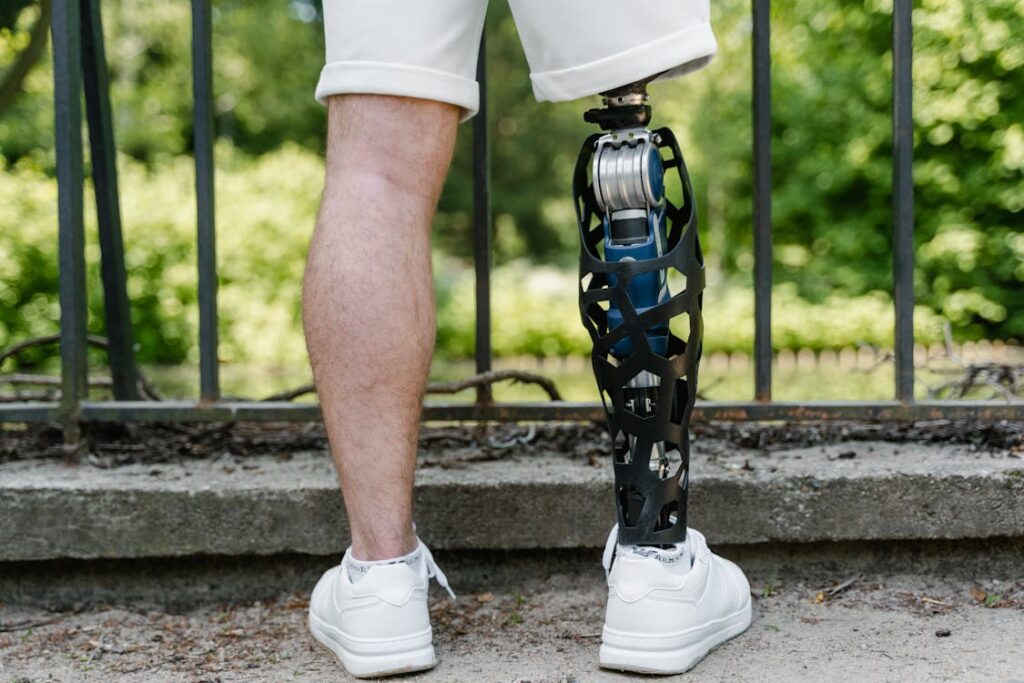
Ramesh’s Resolve: A Veteran’s Path to Standing Tall Again
A Life of Service Interrupted
Ramesh Singh, a 61-year-old retired army officer from Dehradun, had lived a life of discipline, movement, and service. He had crossed mountain passes, led teams through flood relief missions, and marched in parades with pride. After his retirement, he continued to live an active life — morning walks, tending to his garden, and volunteering at local schools.
But a sudden diagnosis of diabetic complications changed everything. An untreated wound on his right foot turned into a life-threatening infection. Doctors did their best, but in the end, a below-knee amputation became unavoidable.
“I faced enemy fire before,” Ramesh said, “but nothing prepares you for the silence that follows losing a part of your body.”
After the operation, he sat in his hospital bed with a straight face, but his eyes gave away the inner storm. He wasn’t worried about pain — he was worried about losing purpose. “What if I can’t walk again? What use will I be to anyone?”
His wife, Meena, reached out to us at Robobionics just a few days after his surgery. She had one question: “Can he be fitted early? He won’t sit still for long.”
The Start of a New Mission
When we met Ramesh, we knew we weren’t dealing with an ordinary patient. He didn’t want sympathy — he wanted a plan. So, we gave him one.
We worked with his doctors to clear him for early rehab. By the second week post-surgery, he was already doing bedside exercises to keep his upper leg and core muscles engaged. He learned how to apply compression wraps and gently massage the limb to reduce swelling and shape it for a future prosthesis.
Within four weeks, his residual limb was healing beautifully. His spirit? Even better.
He kept a daily journal of his exercises. He timed himself. He challenged his therapists. The mindset of a soldier never left him — he just needed the right mission.
The Day He Stood Again
Ramesh received his temporary prosthesis five and a half weeks after his surgery. It was a simple but solid below-knee design built to support early mobility. His first session was short — just 15 minutes on parallel bars. But that moment, when he stood tall again, was electric.
“I felt grounded. I felt like myself again,” he said.
He started wearing the prosthesis for short periods every day — walking indoors, climbing a few steps, and even helping Meena in the kitchen. He never overdid it. But he never skipped a session either.
That consistent use kept his muscles strong. His posture improved. His residual limb adapted well. And most importantly, he avoided the usual signs of post-amputation fatigue and imbalance.
Bringing the Army Discipline to Rehab
Ramesh’s therapists often joked that he turned the rehab center into a training camp. He arrived early. He pushed through tough sessions. And he motivated younger patients by sharing his story.
His routine included focused strength training for his thighs and glutes, balance drills, and walking practice in different settings — indoors, outdoors, uneven paths. Within eight weeks of fitting, he was walking without assistance.
But what really stood out was how he used his upper body strength and core control — a result of decades of physical training. His early prosthesis use made it easier to maintain that strength and apply it to everyday movement.
When it was time to upgrade to his permanent limb at the four-month mark, he chose a lightweight carbon-fiber model that allowed more flexibility. With that, he returned to hiking trails — not steep ones, but enough to breathe in the mountain air again.
Rediscovering Purpose in a New Way
For Ramesh, early fitting wasn’t just about walking again. It was about leading again.
He started speaking at veteran support groups, encouraging other retirees who had faced limb loss. He helped younger amputees stay positive and disciplined. He even led a community drive in Dehradun to raise awareness about diabetic foot care.
He became a local example of how timely action, proper rehabilitation, and a strong mindset could turn tragedy into transformation.
“The prosthesis didn’t just lift my body. It lifted my mind,” he said. “And the timing made all the difference.”
What We Learned from Ramesh
Ramesh reminded us that attitude and timing go hand in hand. He was ready to act early — and because he did, his body responded quickly. His muscles stayed strong. His gait remained natural. His rehab time was shorter.
But more than the physical part, it was his early return to routine and purpose that accelerated his recovery.
In every fitting we do, we think of people like Ramesh — because they show what’s possible when early fitting is combined with courage, routine, and the right support system.
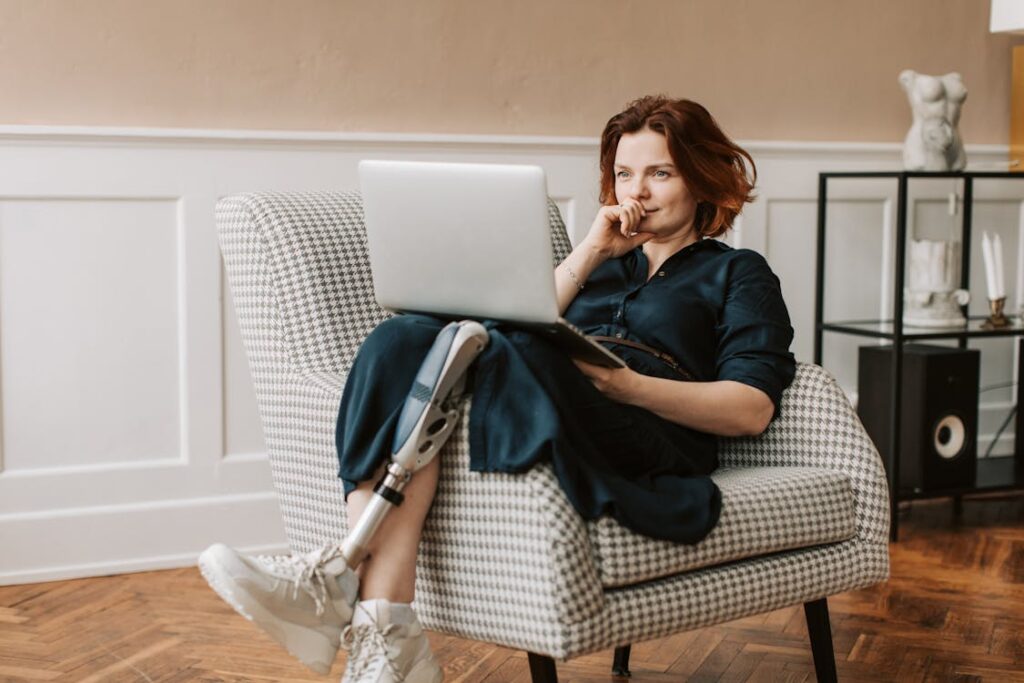
Neha’s Comeback: Reclaiming Confidence After an Upper-Limb Amputation
When the Future Suddenly Feels Uncertain
Neha was 21, studying fashion design in Mumbai, and just a few months away from her final project showcase. She was full of ideas, ambition, and excitement about her future career. But all of that came to a sudden pause one rainy evening when a short-circuit fire broke out in the apartment where she stayed with friends. While helping evacuate others, her right arm got trapped in the fire.
Doctors did their best to save her hand, but the damage was too severe. Within 48 hours, she underwent a below-elbow amputation. Just like that, her drawing hand — the one she had trained for years — was gone.
In those first few days, Neha barely spoke. Her parents flew in from Delhi to be with her. Her friends visited with flowers and notes. But Neha was numb. For a student whose hands were her tools, her art, and her expression, the loss felt deeply personal.
The hospital’s psychiatrist suggested that what Neha needed most wasn’t just therapy or time. She needed a new sense of control. Something that made her feel capable again.
That’s when her father reached out to Robobionics.
Choosing to Try — Even Through Doubt
When we first met Neha, she was quiet and withdrawn. We didn’t talk about prosthetics right away. Instead, we asked her to show us her sketchbooks. She hesitated at first but eventually opened one — filled with beautiful designs, clean lines, and bold color combinations.
“This is you,” we told her. “This didn’t come from just a hand. It came from your vision. That’s still there.”
It was the start of something important. Not a big breakthrough — just a flicker of willingness to try.
We explained that many patients with upper-limb amputations benefit from early fitting, especially when they stay active in daily tasks. Using a prosthetic hand early helps preserve shoulder, elbow, and back strength. It also helps prevent postural issues and makes it easier to adapt emotionally.
Neha was unsure. “Will I be able to draw again?” she asked.
The truth was, maybe not in the same way. But definitely in a new way. And possibly better than she imagined.
Fitting Her First Myoelectric Prosthesis
At five weeks post-surgery, Neha was fitted with her first myoelectric prosthetic hand. It was a lightweight, battery-powered limb that could open and close fingers using signals from her muscles.
The fitting session was quiet. Her parents watched from the side. Neha sat still as the prosthetist explained how the limb worked. Electrodes on her forearm would detect muscle signals — when she flexed or relaxed — and use them to move the fingers.
At first, she could only make the hand open and close. But when she managed to hold a pen, even shakily, her face lit up for the first time since the accident.
From that day, she practiced daily. Not full sketches yet, but simple strokes. Dots, circles, straight lines. Slowly, her coordination improved. Her back muscles stayed active, her posture stayed aligned, and she didn’t fall into the physical slump that often happens with upper-limb amputees.
Redesigning Her Routine and Her Outlook
Neha worked with an occupational therapist to relearn tasks — brushing her hair, using a spoon, zipping her bag, typing. At first, it was frustrating. But early prosthesis use made it possible to move through these frustrations before they became habits of avoidance.
The big shift came two months later. One afternoon, while experimenting with left-hand sketching and right-hand grip, Neha completed a simple blouse design. It wasn’t perfect, but it was original — and it was hers.
From then on, she started combining techniques. Holding the paper with her prosthetic hand. Sketching with her left. Using her body in new ways. The prosthesis became not just a replacement, but a creative aid.
She returned to college after four months and gave her final project presentation in person. Her design — inspired by phoenix wings — received a standing ovation.
A New Identity, Not a New Limitation
What Neha discovered through early fitting was something no therapy or lecture could offer: momentum. That momentum kept her from falling into isolation. It helped her keep her body active, her muscles responsive, and her creativity alive.
When she later upgraded to a more advanced prosthetic hand with multiple grip modes, she was already used to the sensation, the control, and the emotional weight of using an artificial limb.
She now runs an Instagram page for amputee artists, shares tips on adapting drawing techniques, and speaks at student panels about turning adversity into design inspiration.
“My hand was my tool,” she says, “but my strength — that came from choosing to act early, even when I was scared.”
What We Learned from Neha
Neha’s story reminds us that recovery is not just about the body. It’s about identity. And the sooner we begin the journey, the easier it becomes to reclaim that identity — not by replacing what’s lost, but by rediscovering what’s still there.
Early prosthesis fitting allowed Neha to stay ahead of physical decline, but more importantly, it stopped emotional stagnation. It gave her a sense of control before fear could settle too deeply.
Her story is a powerful example of how fitting a limb early can give back more than function — it can give back self-worth.
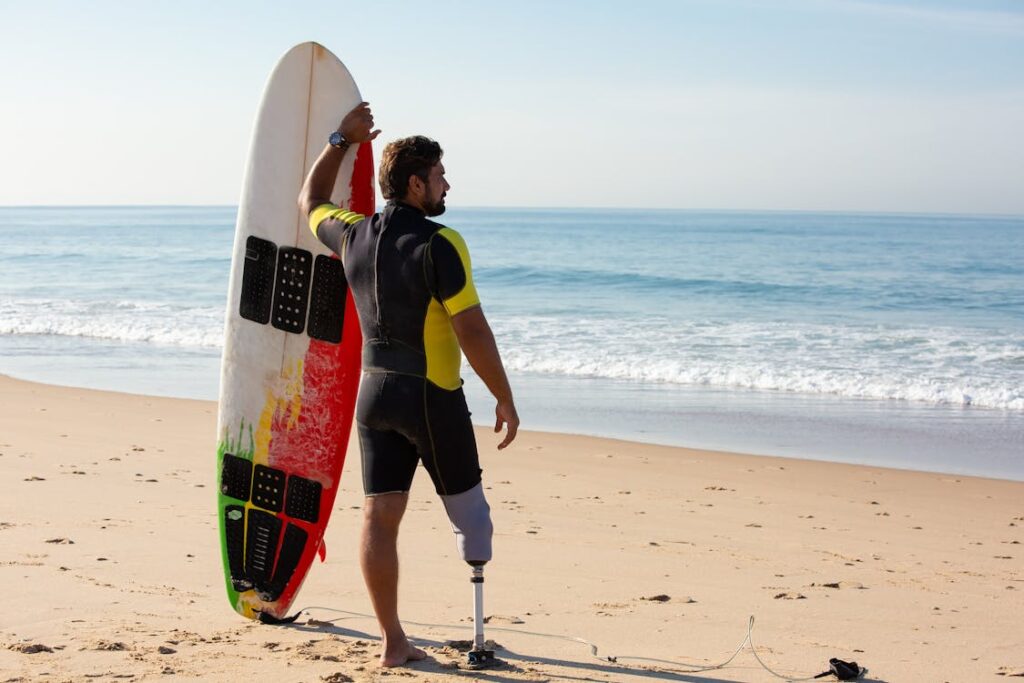
Farhan’s Fast Return: Rebuilding a Business and a Life
From Behind the Counter to the Operating Table
Farhan, a 38-year-old shopkeeper in Hyderabad, had spent the last 12 years running his family’s kirana store. From morning till late evening, he handled deliveries, lifted bags of rice and flour, managed billing, and served a steady flow of loyal customers. Everyone in the neighborhood knew Farhan — not just as a store owner, but as a man always ready to help.
Then, one day, while riding his scooter to the wholesale market, a speeding car ran a red light and hit him head-on. His left leg was crushed beneath the two-wheeler. The damage was severe, and infection set in quickly. After days of intensive care, doctors concluded that a below-knee amputation was the only way to save his life.
For someone whose life revolved around being on his feet, this news was crushing. Farhan felt like his livelihood, his routine, and his identity were all being taken from him in one moment. “How can I run my shop like this?” he asked, not just out of fear, but out of sheer disbelief.
Making a Quick — But Thoughtful — Decision
Farhan’s younger brother, Imran, who had temporarily taken over the shop duties, did not waste time. He spoke to the medical team, searched online, and soon got in touch with Robobionics. His goal was clear: “My brother needs to be on his feet again — not a year from now, but as soon as safely possible.”
Our team stepped in just three days post-surgery to assess Farhan’s condition. He was recovering well, his vitals were stable, and his willpower — despite the emotional stress — was strong. We explained the timeline of early fitting, and how his physical health and age made him an ideal candidate.
Farhan was hesitant at first. He had heard stories of people waiting six months or more to get a prosthesis. But after hearing how early mobility could save him from muscle loss, fatigue, and long-term weakness, he agreed to begin.
Small Moves, Big Changes
At just two weeks post-surgery, Farhan began gentle therapy at home. He practiced upper body strengthening, light core activation, and learned how to wrap his residual limb to help it shrink and shape properly. He stayed consistent, even on days when he didn’t feel like it.
By the fourth week, his limb was ready for the first fitting. His temporary prosthesis — a basic but robust below-knee model — was delivered, and his training began the same day. He stood holding onto parallel bars and took his first steps after the accident.
That moment, according to Imran, changed everything.
“He looked at me, and there was light in his eyes again. That’s when I knew we were going to be okay,” Imran said.
Back Behind the Counter — On His Terms
Farhan’s goal was never to run marathons. He just wanted to get back to doing what he loved: serving customers, managing the store, and walking around without needing help. Thanks to early fitting, that goal became achievable faster than anyone expected.
By the sixth week, he was walking short distances independently. He practiced stepping around the shop, lifting small packages, and managing his balance on uneven ground. Because his muscles had stayed active, his posture remained natural. There was no need for long correctional therapy.
At eight weeks post-surgery, Farhan re-opened the store with Imran still supporting him. He couldn’t handle heavy lifting just yet, but he was back behind the counter — smiling, managing stock lists, and interacting with his customers as if nothing had changed.
“People were surprised to see me walking so soon,” he laughed. “I told them — it’s all about not waiting too long.”
Long-Term Strength from Short-Term Action
Over the next few months, Farhan continued to strengthen his leg and improve his gait. He upgraded to a more durable prosthesis that offered better grip and flexibility, making it easier to manage long hours of standing.
He also learned important techniques to reduce pressure on his residual limb, allowing him to move throughout the day without pain. More importantly, he avoided the common setbacks — joint stiffness, hip weakness, and fatigue — because his body had stayed active from the start.
Customers noticed. Many asked about the prosthetic leg. Farhan never hid it — in fact, he began sharing his journey with others who had faced similar challenges.
What We Learned from Farhan
Farhan’s story showed us something powerful: mobility is deeply tied to identity and dignity. For someone whose work is physical and interactive, the ability to move freely isn’t just a convenience — it’s a part of their confidence and independence.
By choosing early prosthesis fitting, Farhan was able to keep his business running, avoid economic stress, and maintain his sense of purpose. He didn’t wait for the perfect moment — he just started moving, one step at a time.
Today, he continues to run the shop full-time, often standing for hours, joking with regulars, and reminding everyone that recovery isn’t about waiting — it’s about starting when you still have the strength to shape the journey.

Revathi’s Renewal: Finding Balance as a School Leader and Amputee
A Sudden Shift in a Busy Life
Revathi Krishnan was always on the move. As the principal of a bustling girls’ school in Chennai, she juggled morning assemblies, teacher meetings, student counseling sessions, and administrative tasks — often all before lunch. She walked fast, spoke with energy, and prided herself on being hands-on in everything she did.
At 49, she had no history of illness. But one day, while returning from a field trip with her students, Revathi suddenly collapsed. She was rushed to the hospital, where doctors diagnosed her with a severe arterial blockage in her right leg. Despite multiple interventions, they couldn’t restore blood flow. The tissues began dying, and the only option was a transfemoral (above-knee) amputation.
The news came as a shock. She didn’t have time to prepare, emotionally or mentally. “One week I was walking the school halls. The next, I was lying in a hospital bed without a leg,” she said. “I didn’t even get to say goodbye to that part of my body.”
The hardest part for her wasn’t the pain — it was imagining life away from the school, her students, and her team. She worried she’d be forced into early retirement. That thought alone made her feel like her life was shrinking.
An Invitation to Begin Anew
A friend of Revathi’s — a fellow educator who had recently undergone knee surgery — recommended Robobionics. When our team first met her, she was sitting in her hospital room, surrounded by books and papers. She looked tired but focused.
“I don’t want sympathy,” she told us. “I want strategy.”
That line set the tone for everything that followed.
We explained that above-knee amputees generally have a steeper learning curve. The loss of the knee joint makes balance, gait, and muscle use more complex. But we also explained that early prosthesis fitting can make a huge difference — helping maintain core strength, prevent hip misalignment, and support faster reintegration into everyday roles.
Revathi listened carefully. Then she said, “Tell me what to do.”
Getting Stronger Before the Fit
With her medical team’s approval, Revathi began pre-prosthetic training three weeks after her surgery. The first goal was not walking — it was preparing her body. Her therapy focused on:
- Strengthening her glutes and hips
- Maintaining flexibility in her lower back
- Practicing safe transfer techniques
She also used a limb shrinker to shape the residual limb. Each day, she logged her activities — timing how long she could hold certain postures or lift her leg without support. She turned her recovery into a lesson plan, complete with goals and outcomes.
By the sixth week, she was ready for her first above-knee temporary prosthesis.
Learning to Balance — In More Ways Than One
Above-knee prosthetics require more muscle control, especially for balance and weight shifts. Revathi’s first day on the prosthesis was cautious. Using parallel bars, she stood and practiced shifting her weight from side to side.
That first session lasted just 20 minutes. But it gave her what she needed: hope mixed with a challenge.
Over the next four weeks, she increased her practice time, focusing on balance, smooth walking, and climbing low steps. Her therapists guided her posture and coached her to use her core muscles effectively — something many above-knee amputees struggle with when they start too late.
Because Revathi began early, her residual limb adapted well. There were no sores, no gait abnormalities, and no major alignment issues. She wore the limb for gradually longer periods each day, transitioning from indoor walking to navigating short outdoor paths.
She even practiced walking through crowded corridors, simulating school hallways, just to prepare for her return.
Back to Her Calling
Three months after her amputation, Revathi returned to school — first for short visits, then full days. Her staff greeted her with tears and flowers. Her students gave her a standing ovation at assembly.
She didn’t hide her prosthesis. She spoke about it. She turned it into a lesson on resilience.
She also became more intentional about her health. She began morning yoga (with adaptations), sat on an ergonomic chair, and scheduled walking breaks into her day. She found a new kind of balance, both physical and emotional.
Her permanent prosthesis, fitted at the five-month mark, was built with microprocessor knee technology — offering smoother steps and automatic adjustments for different terrains. She walked confidently, even on slightly uneven school grounds.
What We Learned from Revathi
Revathi’s story taught us that leadership doesn’t pause for injury. Her commitment to her students became her motivation. And her decision to start prosthetic fitting early made everything else possible.
For above-knee amputees, timing is even more crucial. The physical demand is higher, and the risk of hip, spine, and back problems is greater when the body remains inactive for too long. But with early fitting, the body adapts, muscles stay engaged, and the learning process becomes smoother.
Revathi reminded us that people don’t just want to walk — they want to return to their lives, their roles, their routines. And when they do it with strength, they inspire everyone around them.
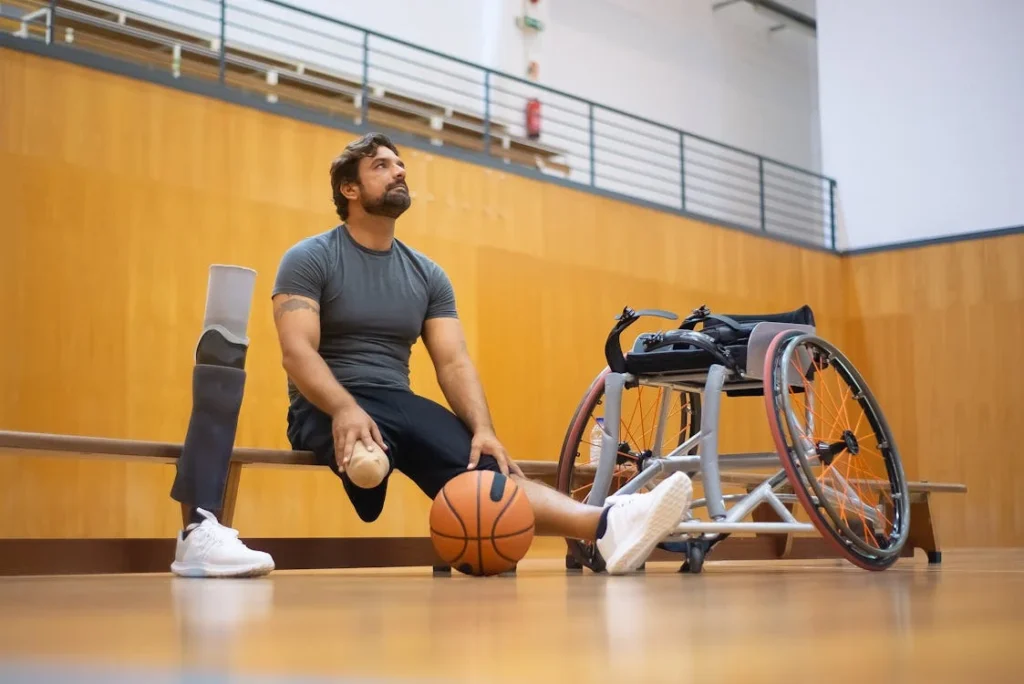
The Power of Timely Action: What These Stories Teach Us About Early Prosthetic Fitting
Each story you’ve read so far — Anjali’s, Ramesh’s, Neha’s, Farhan’s, and Revathi’s — is deeply personal and unique. They come from different places, different lives, and different experiences. But despite all that, they share one powerful thread: timely action made all the difference.
The decision to fit a prosthesis early didn’t erase their pain or undo their loss. But it did give them something equally important — momentum. It kept their bodies strong, their spirits motivated, and their recovery moving forward. That’s the true value of early prosthesis fitting.
In this final section, let’s reflect on what we can learn from these journeys and how you — whether a patient, caregiver, or healthcare professional — can apply these insights to your own situation.
Muscles Remember, But Only If You Let Them
The body is designed for movement. And muscles, once idle for too long, begin to shrink. It doesn’t matter if you’re 20 or 70 — if the body isn’t challenged, it adapts to doing less.
In all our patients, the biggest physical gains came from avoiding inactivity. By getting fitted early with a temporary or training prosthesis, they kept their muscles engaged. This didn’t just help them walk — it helped them avoid joint stiffness, poor posture, and longer rehab timelines.
Whether you’ve had a below-knee, above-knee, or upper-limb amputation, the message is the same: use it or lose it. Early fitting gives you a reason to move — and that movement leads to strength.
Confidence Builds in Small Moments
Many people think of prosthetic fitting as a single event — a big, dramatic moment when someone walks again. But in reality, it’s a series of small steps.
The first time standing with support.
The first step across a room.
The first time brushing your hair, or writing your name.
Each of these small victories builds confidence.
And the earlier they happen, the more they compound. The brain gets used to using the new limb. The body adjusts. The fear fades. Our patients didn’t just recover — they grew. Emotionally, physically, and mentally.
That’s what early fitting gives you: a head start on hope.
Waiting Doesn’t Always Help — But Starting Early Usually Does
Many people wait too long to begin prosthetic use — sometimes because of fear, sometimes because of misinformation, and sometimes because no one told them it was possible to start sooner.
But the truth is, the longer you wait, the harder it gets. Muscles weaken. Habits form. Emotional walls build up. And even the most advanced prosthesis won’t work well if the body isn’t ready to use it.
On the other hand, even a basic temporary limb can do wonders when introduced at the right time — with professional support, monitoring, and gentle progression.
Starting early doesn’t mean rushing. It means using the healing window wisely. It means letting your body stay active while your wound heals. It means preparing — not just recovering.
Support Systems Make or Break Recovery
In every story we shared, one thing stood out: no one recovered alone. Whether it was a spouse, a sibling, a parent, or a care team, support made all the difference.
Early fitting works best when you have:
- A prosthetist who listens and adapts your limb as you grow
- A physiotherapist or occupational therapist guiding you through movement
- A medical team that tracks healing while encouraging progress
- Family and friends who lift your mood and remind you of who you were before the amputation
At Robobionics, we believe prosthetic care isn’t just technical — it’s personal. That’s why we assign dedicated care coordinators, offer emotional support tools, and build custom timelines for each patient.
You’re not a number. You’re a story waiting to continue — and we’re here to help you write it.
The Right Time Is Sooner Than You Think
If you or someone you care about has undergone amputation, or is about to, don’t wait for everything to be “perfect.” Don’t wait until the wound is completely healed, or the pain is fully gone, or the motivation suddenly returns.
Instead, reach out. Ask questions. Start the conversation about early fitting now.
You might be ready for:
- Pre-prosthetic therapy to prepare the limb
- Residual limb shaping and strengthening
- Your first temporary prosthesis
- A plan to transition to a permanent limb when the time comes
We’ve seen lives transformed simply because someone said, “Let’s start now, safely and gently.”
Conclusion
Losing a limb may feel like the end of something. But for so many of our patients, it became the start of something new — a second chapter full of strength, courage, and growth.
Early prosthesis fitting isn’t a shortcut. It’s not about skipping healing or ignoring pain. It’s about aligning the right actions with the body’s natural rhythm. It’s about giving yourself the best chance to heal strong — not just survive, but thrive.
So if you’re standing at that crossroads, wondering what comes next…
Let these stories be your answer.
Start early. Walk steadily. Heal fully.
And remember — at Robobionics, we’re here to walk with you, every step of the way.



